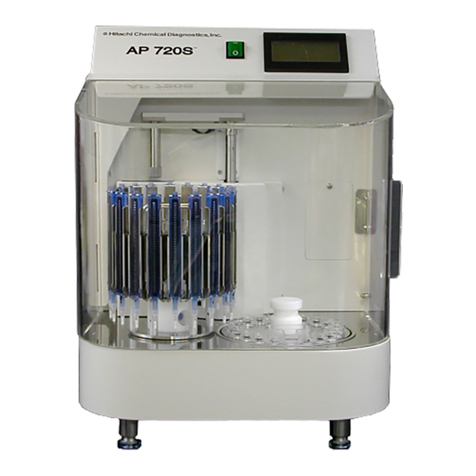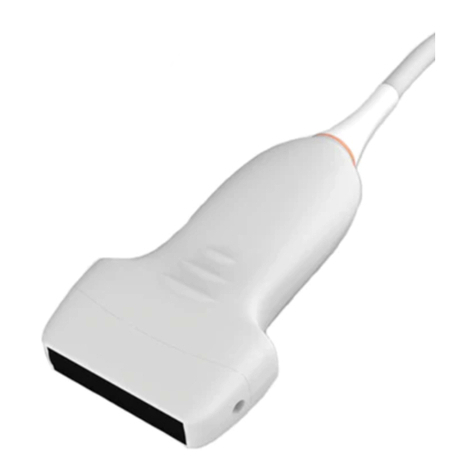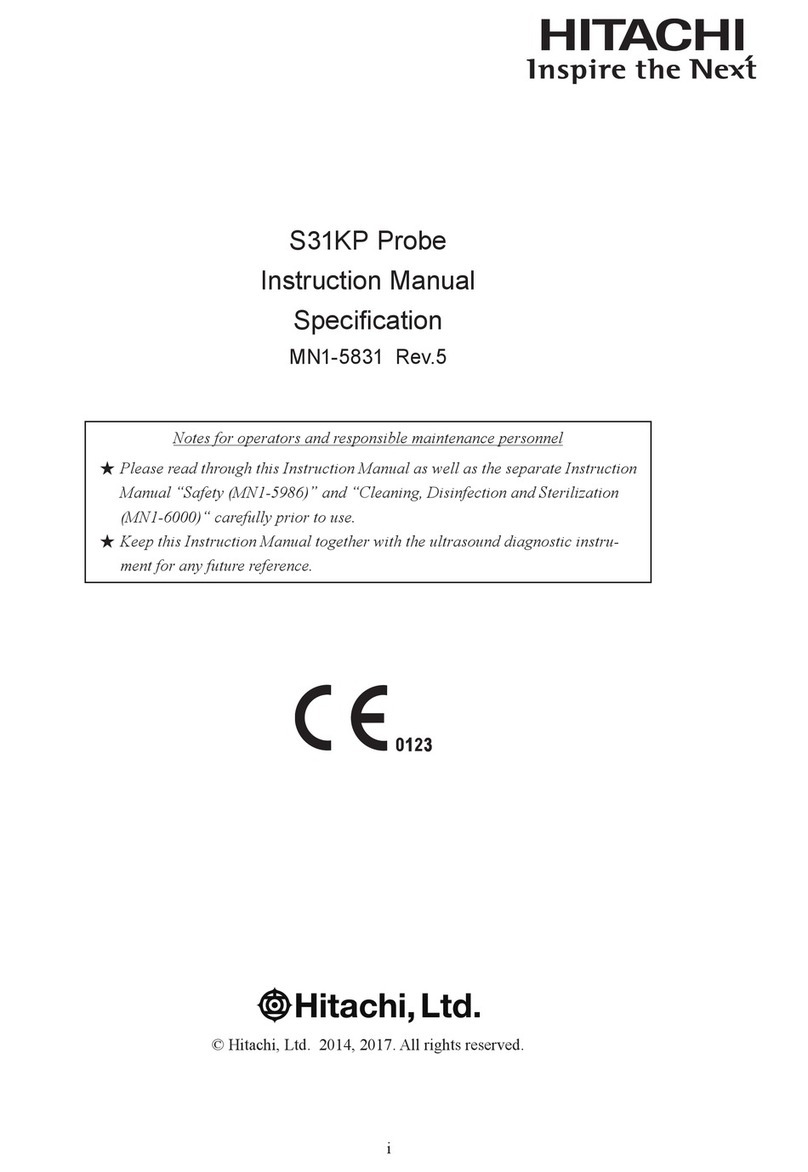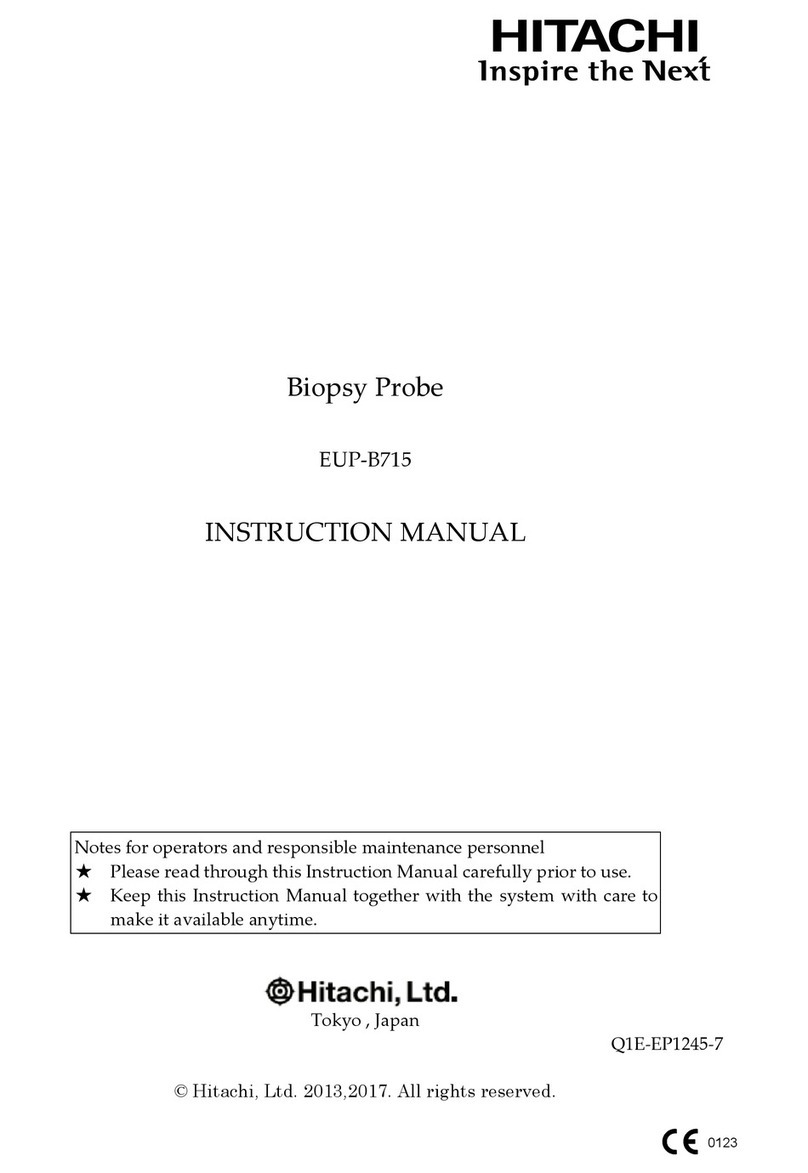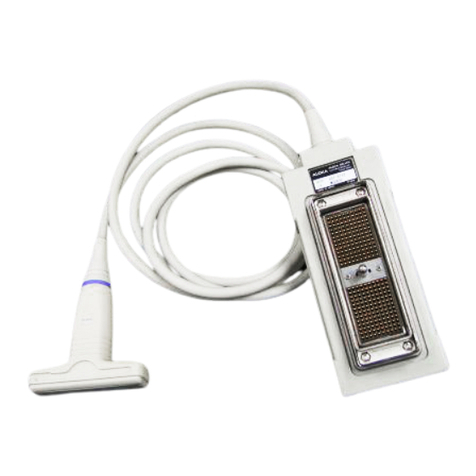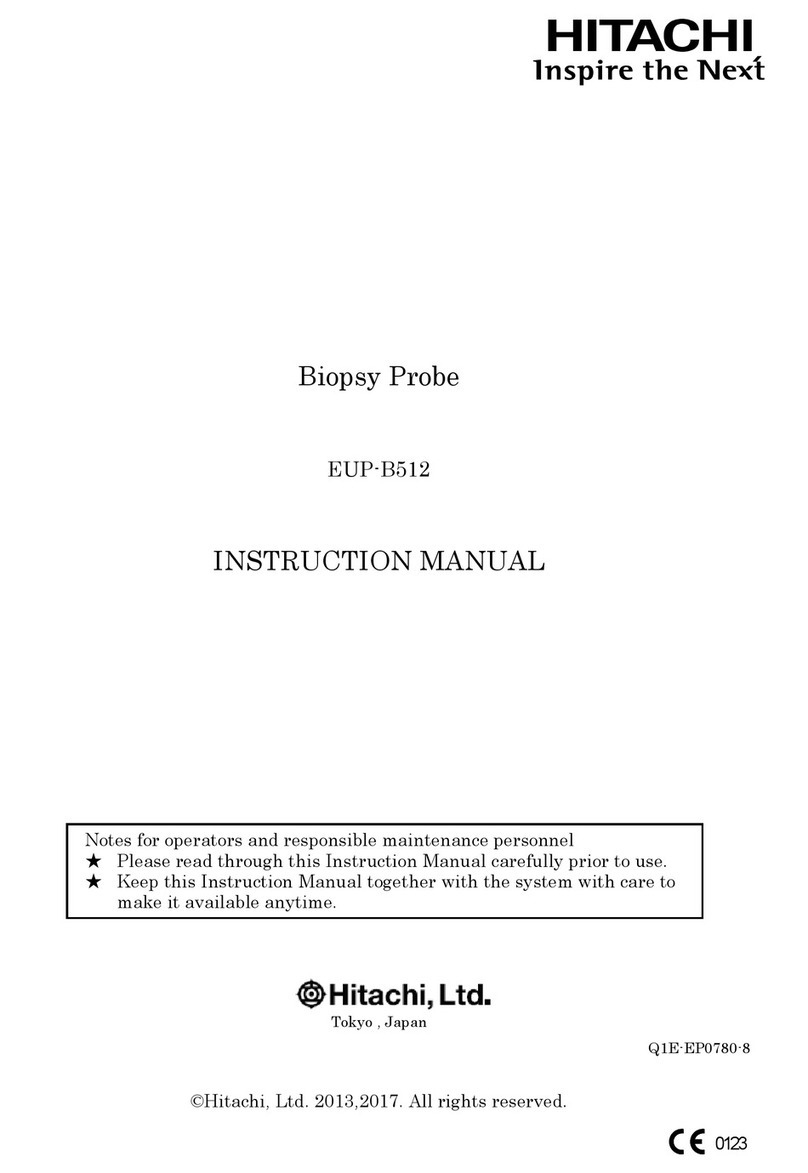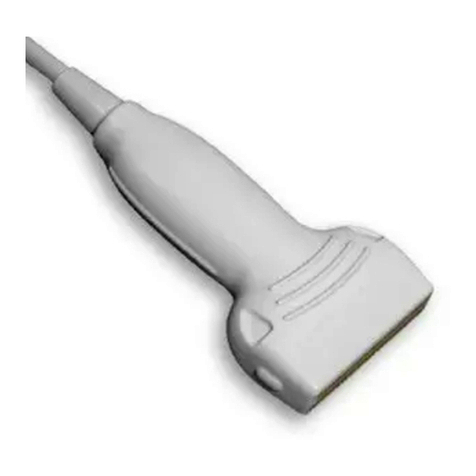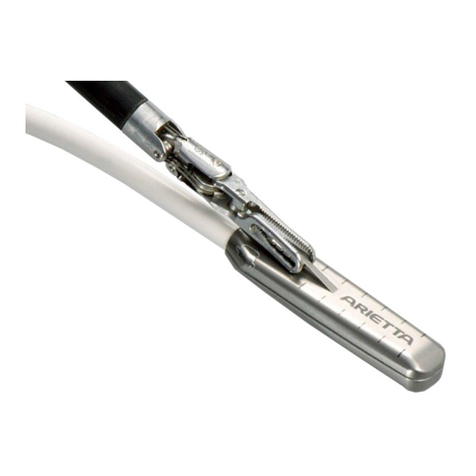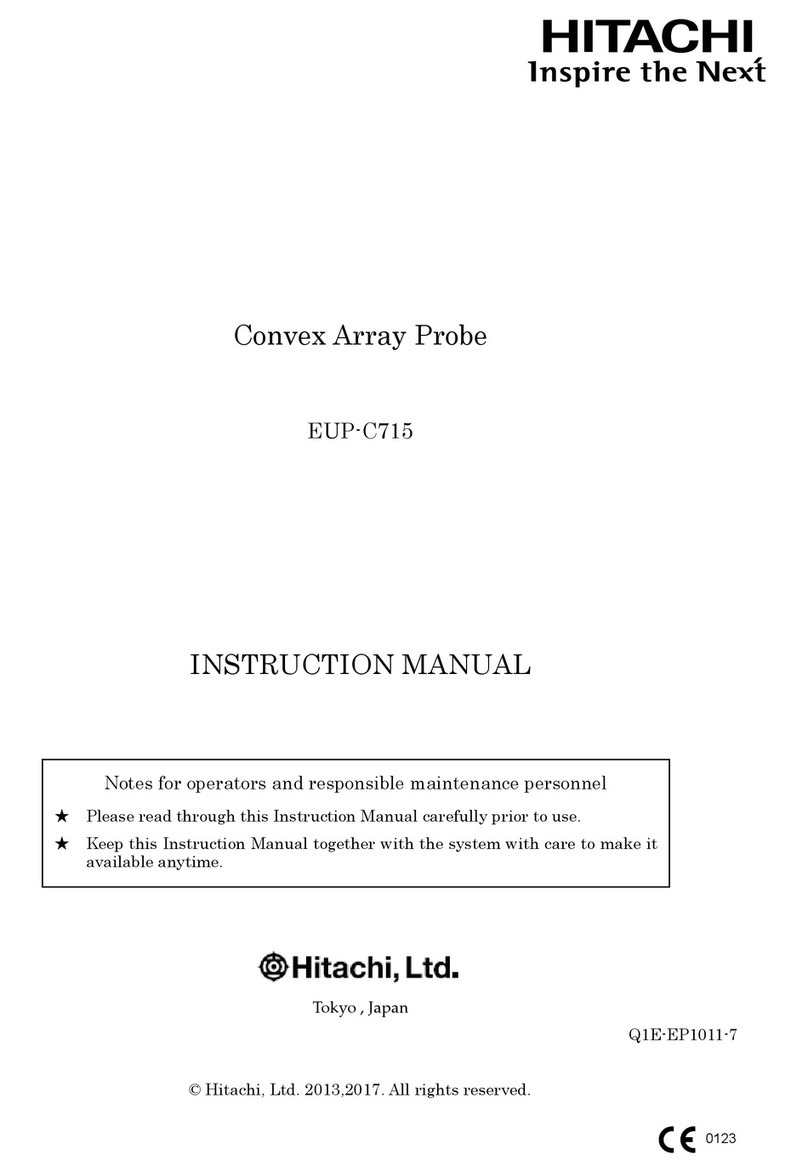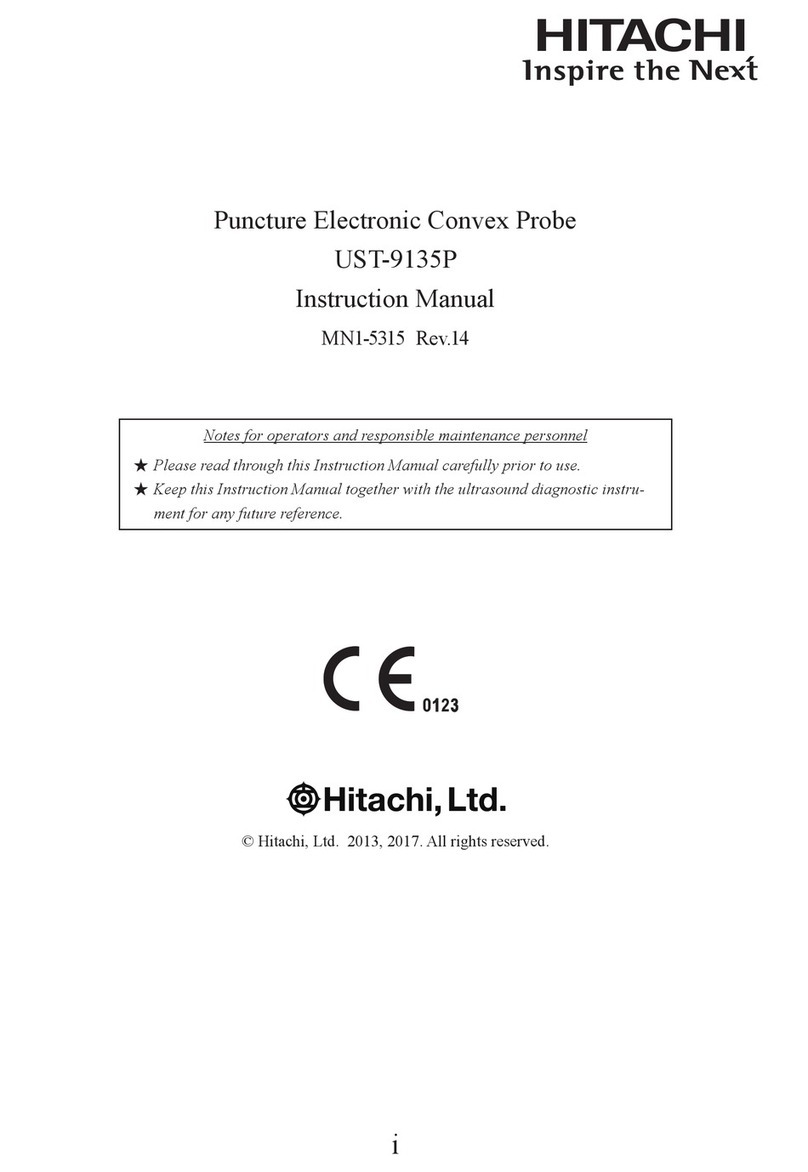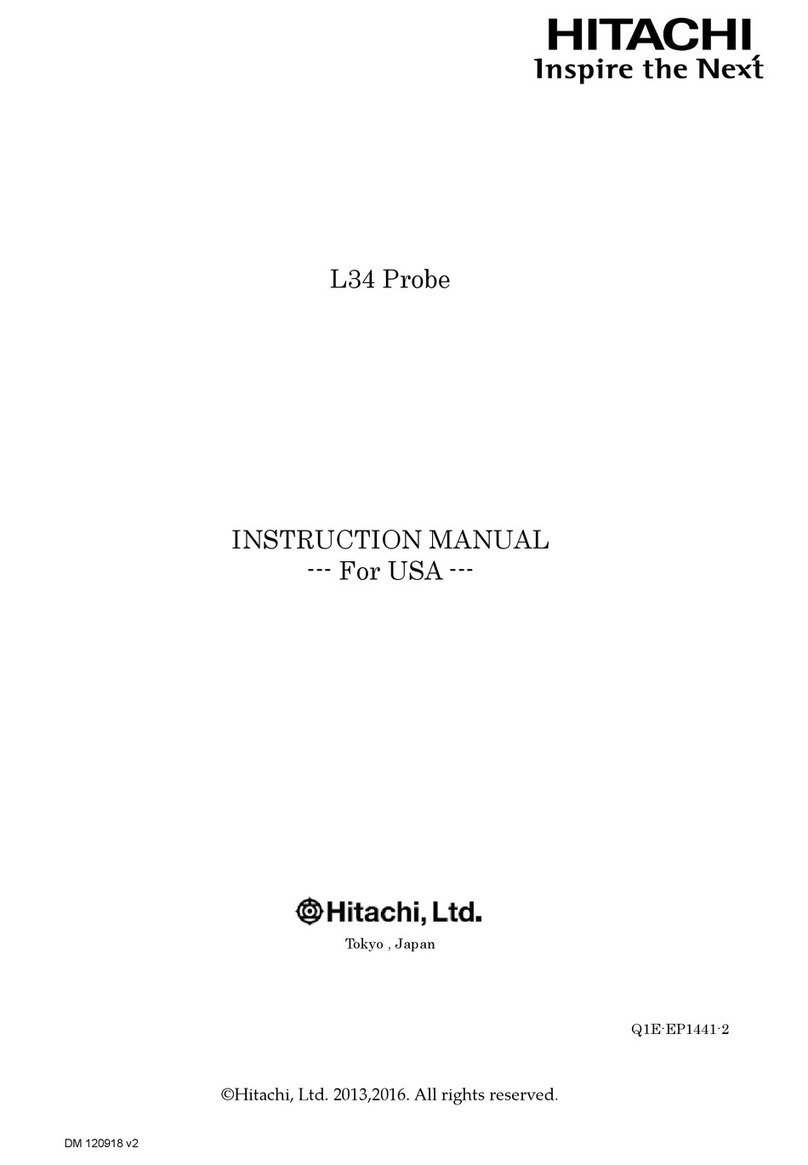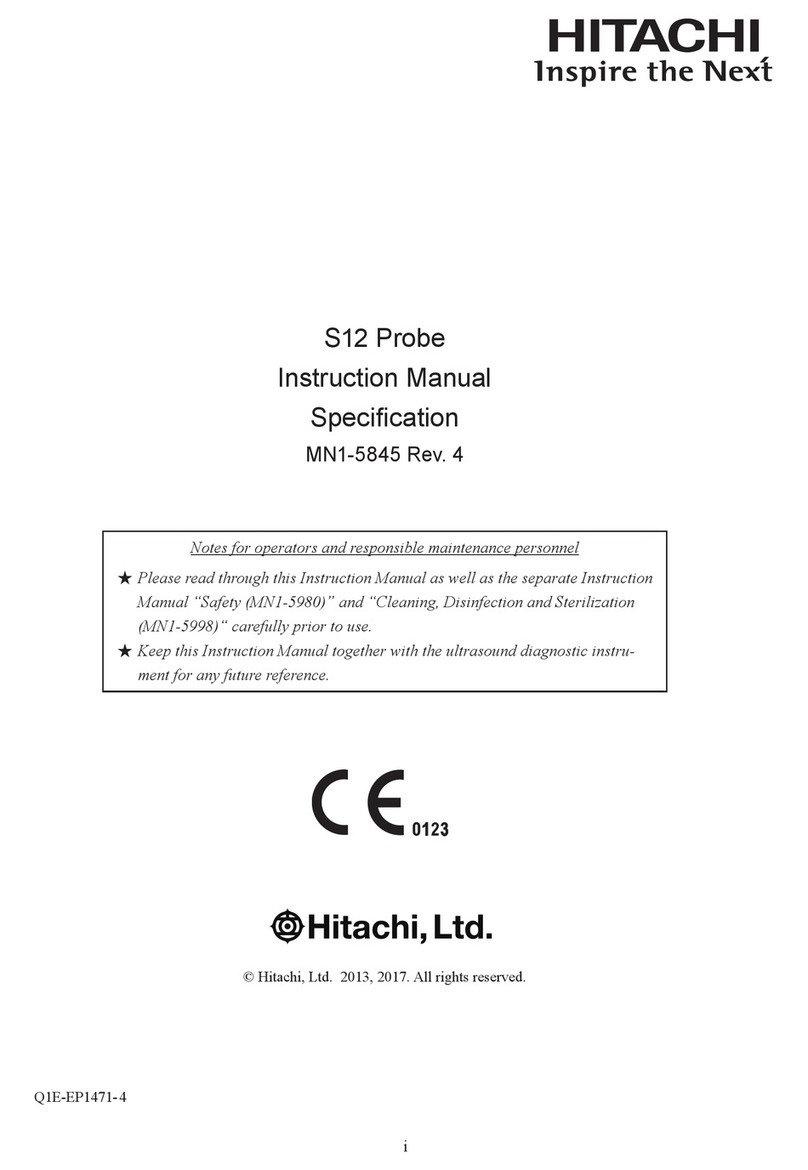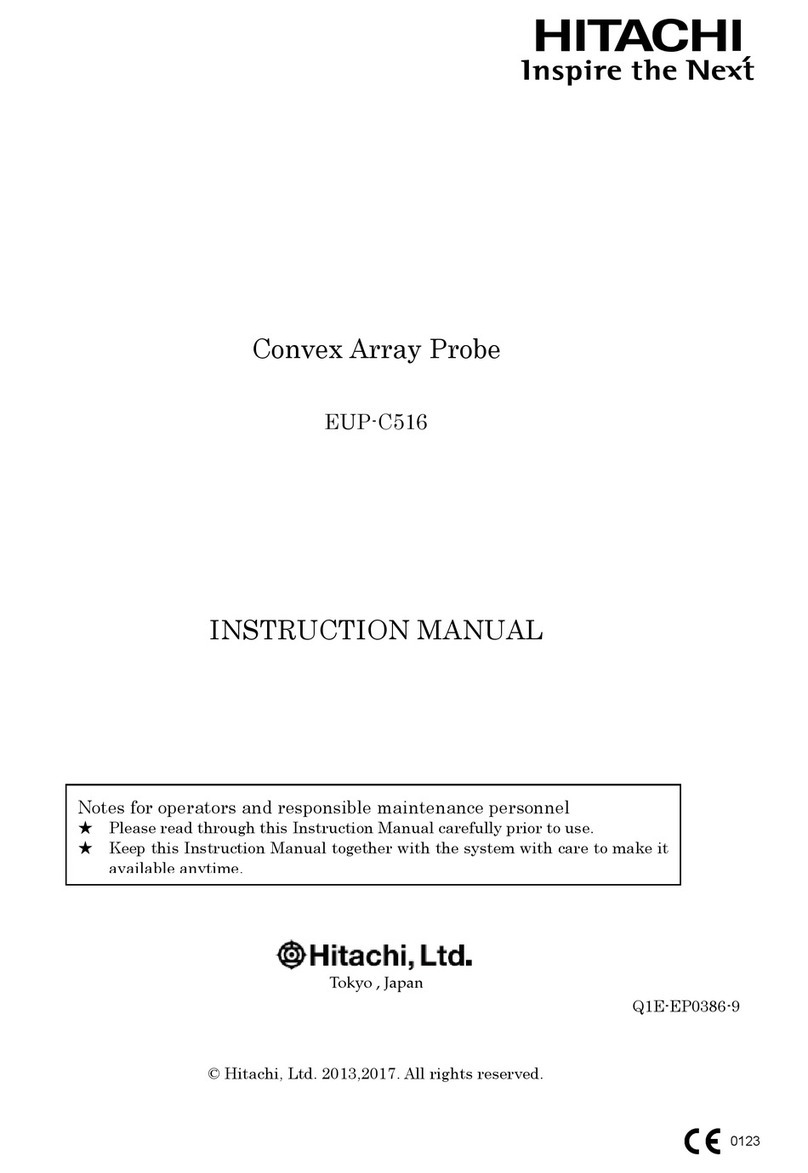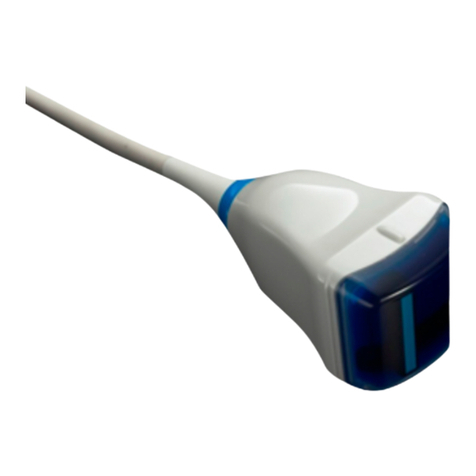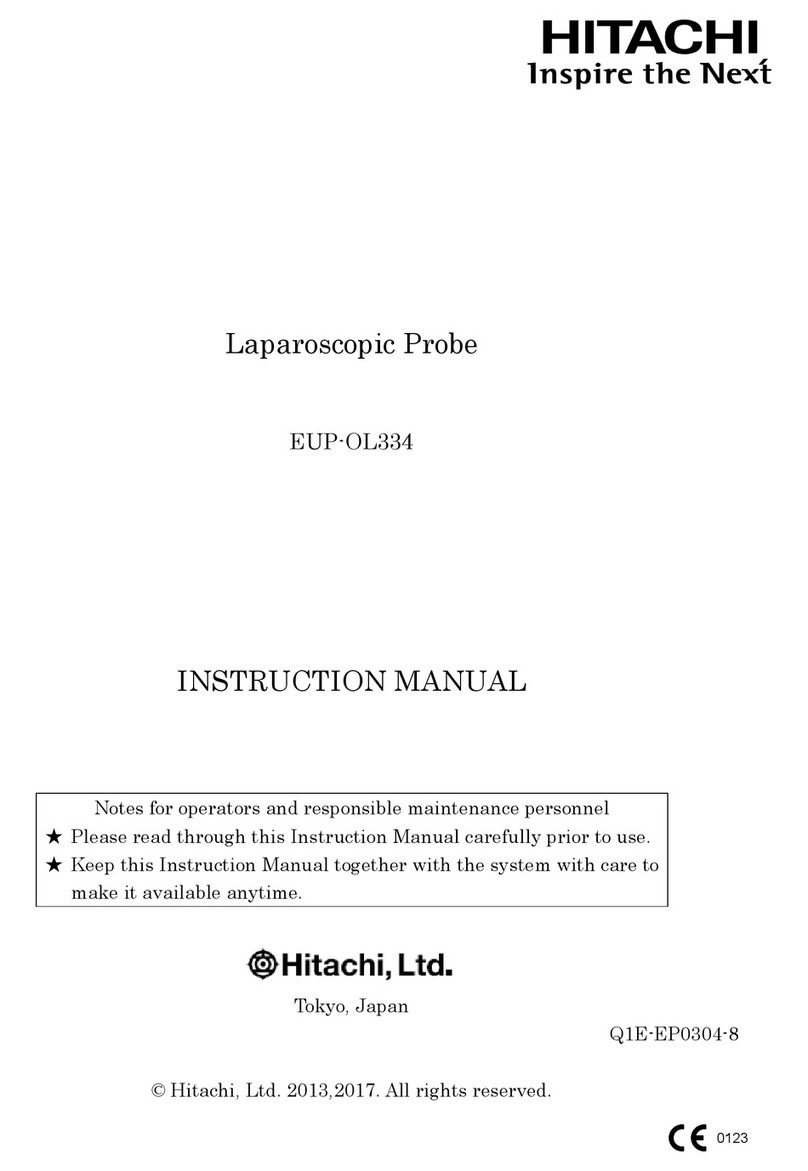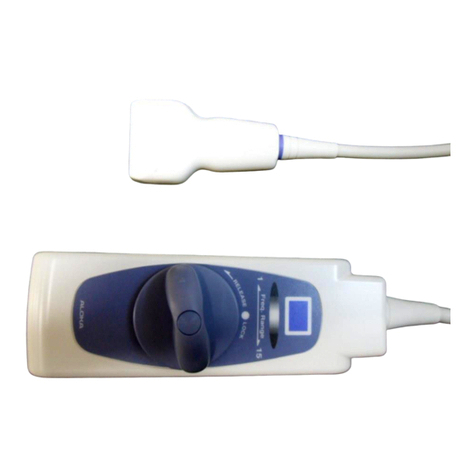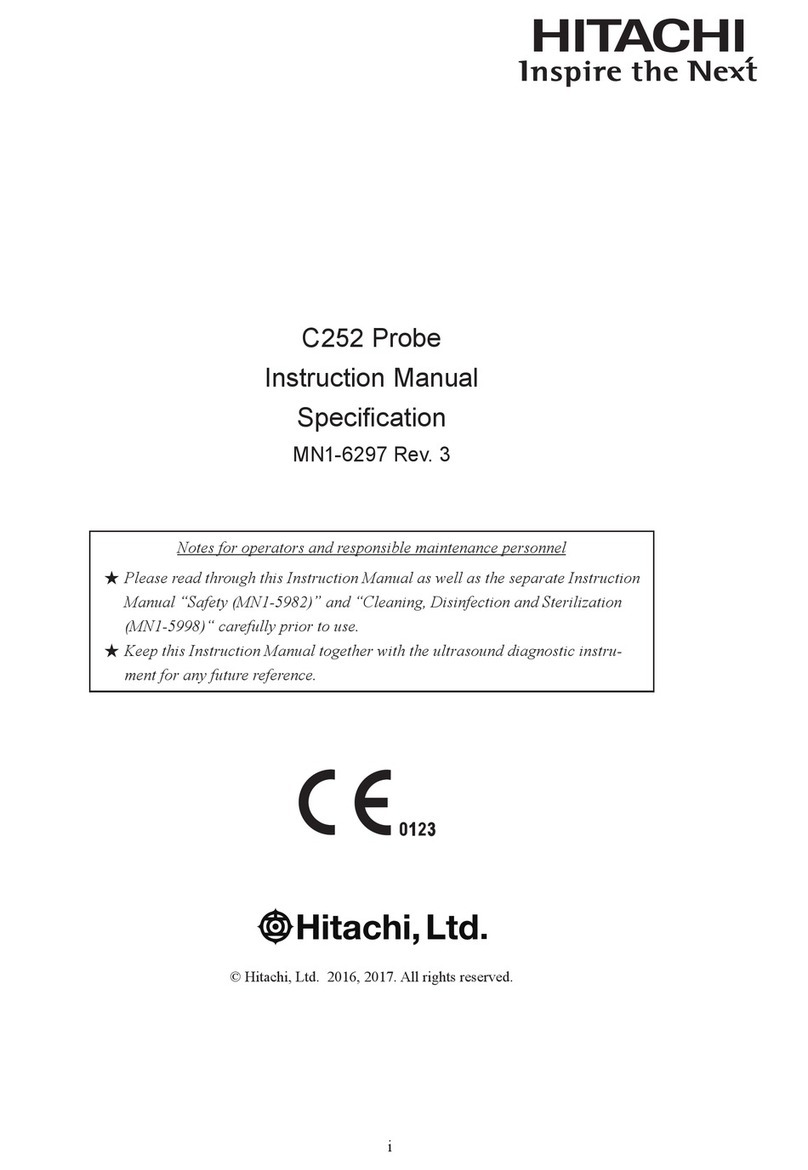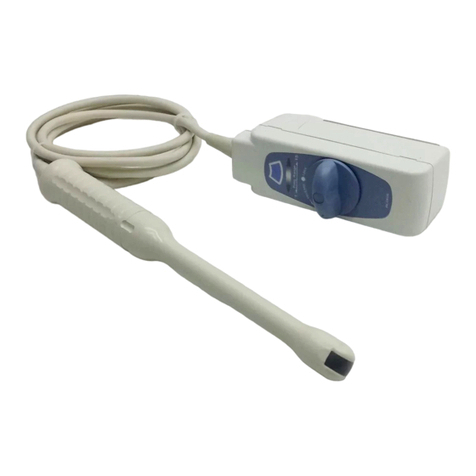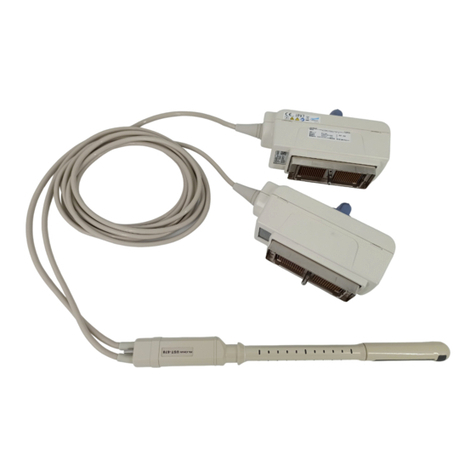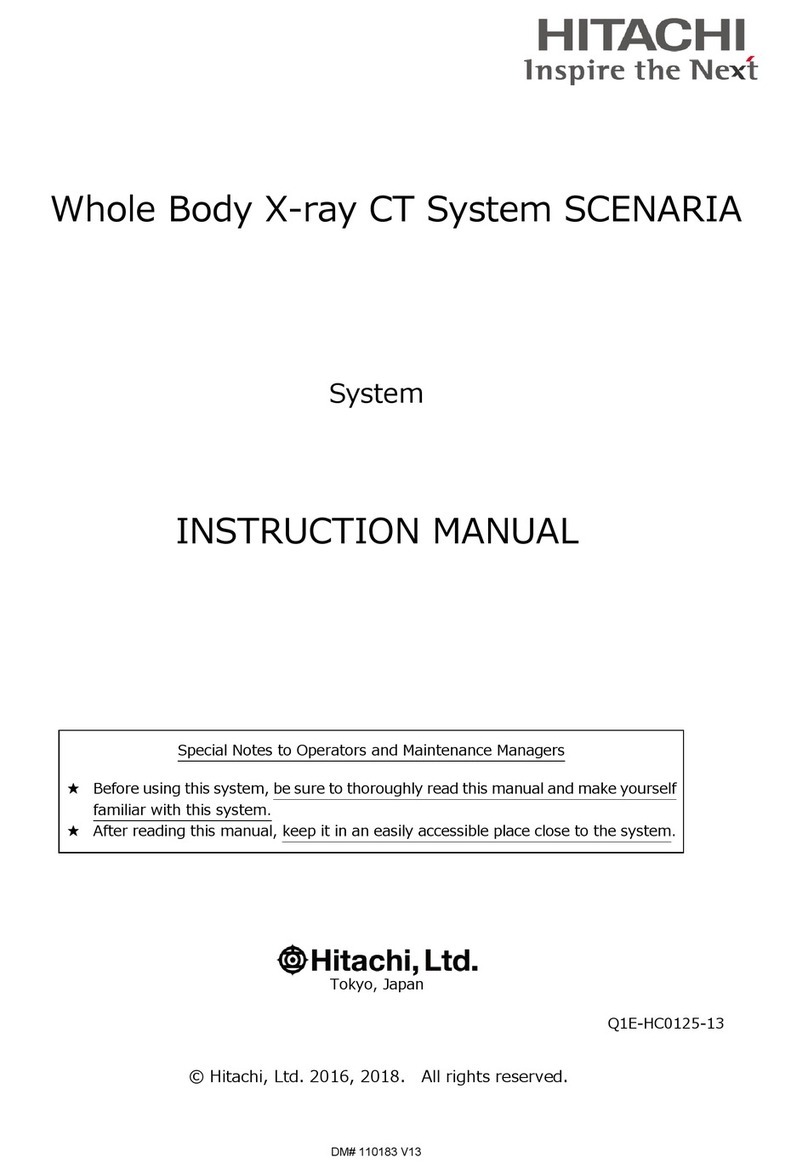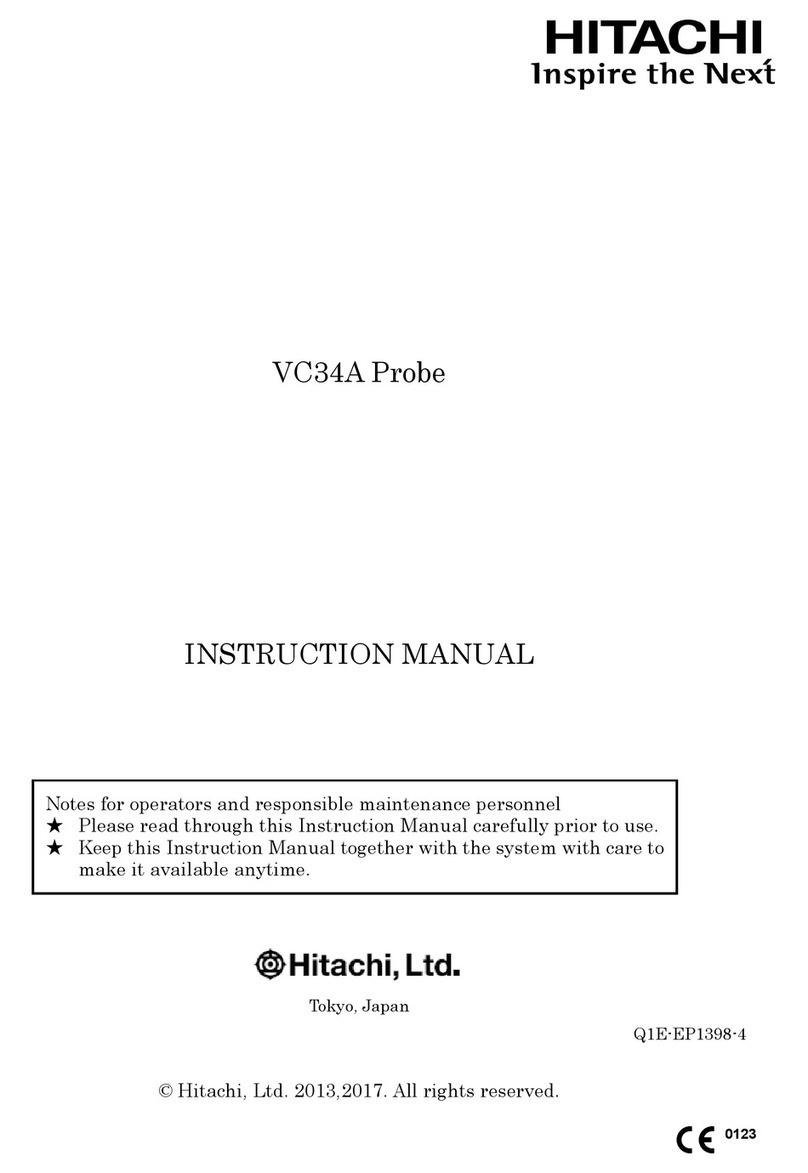
(5) Q1E-EP1457
CONTENTS Page
1. General ······················································· 1
1.1 Features ··················································· 1
1.2 Principles of operation ···································· 1
1.3 Intended Use ··············································· 2
1.4 Components ················································· 2
1.5 Option ····················································· 3
1.6 External View ·············································· 4
2. Inspection before Use ········································· 5
2.1 Inspection for Appropriate Connection ······················ 5
2.2 Inspection for Material Surface ···························· 5
3. Operation Procedure ··········································· 8
3.1 Probe ······················································ 8
3.2 Attachment ················································· 9
3.3 Needle Guide Bracket EZU-PA7C2 ···························· 12
4. Reprocessing Procedure ······································· 20
4.1 Point of use (Pre-cleaning) ······························· 23
4.2 Containment and transportation ···························· 23
4.3 Manual Cleaning and disinfection ·························· 23
4.4 Drying ···················································· 26
4.5 Inspection ················································ 26
4.6 Packaging ················································· 26
4.7 Sterilization ············································· 26
5. Cleaning and Disinfection of EZU-PA7C2 ······················· 29
5.1 Point of use (Pre-cleaning) ······························· 31
5.2 Containment and transportation ···························· 31
5.3 Manual Cleaning and disinfection ·························· 31
5.4 Automated cleaning and disinfection ······················· 34
5.5 Drying ···················································· 35
5.6 Packaging ················································· 35
5.7 Assembly and Inspection ··································· 35
5.8 Storage ··················································· 35
6. Maintenance and Safety Inspection ···························· 35
7. Safety Precautions ··········································· 36
8. Specifications ··············································· 38
8.1 Probe ····················································· 38
8.2 Suppliers List of the Probe ······························· 39
8.3 Needle Guide Bracket EZU-PA7C2 ···························· 40
8.4 Suppliers list of the Needle Guide Bracket EZU-PA7C2 ······ 40
9. Disposal of the probe ········································ 41

